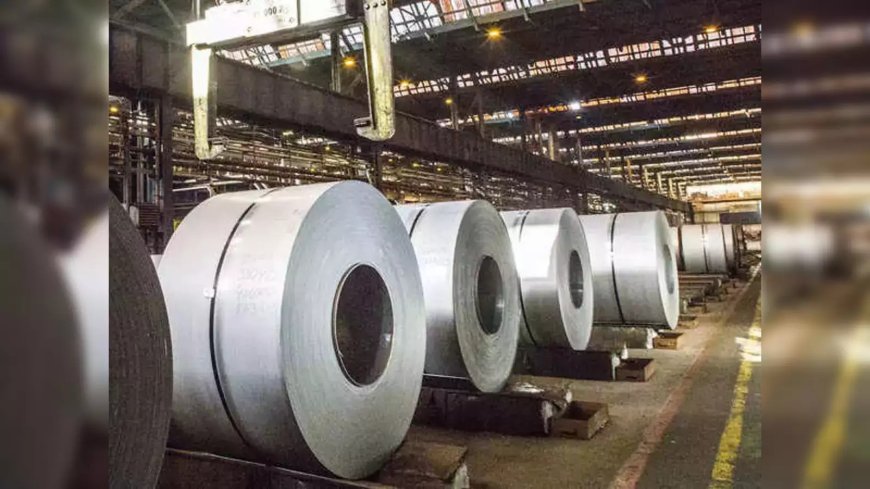The Future of Infrastructure Development in India: Steel’s Crucial Role

India stands poised at a pivotal moment, aiming to position itself as a global economic leader with a projected GDP of $5 trillion by 2047. Central to achieving this vision is the urgent need for robust infrastructure that can support rapid urbanisation, industrial expansion, and an increasing population. High-quality infrastructure is crucial not only for economic growth but also for enhancing the quality of life for millions of citizens.
At the heart of this infrastructure development lies steel—a fundamental material that is essential for constructing everything from skyscrapers and highways to energy facilities and transportation systems. Despite being one of the world's largest steel producers, India requires significant further investment in steel production and innovation to meet the escalating demands of its ambitious infrastructure initiatives. Ensuring a sustainable and resilient supply of steel is vital for India to realise its infrastructure ambitions and maintain its trajectory of economic growth.
Steel in the Indian economy: Current landscape
India stands as the second-largest steel producer globally, with significant growth in consumption over recent years. According to recent statistics, India’s finished steel consumption grew to 138.5 MT in FY24 from 119.2 million tonnes (MT) in FY23. Moreover, the Indian Steel Association (ISA) anticipates a continued increase in demand. Furthermore, domestic steel demand is expected to grow by 9-10% in FY25, according to ICRA.
This growth is fuelled by the Indian government’s commitment to bolstering local manufacturing and infrastructure development, resulting in significant investments in steel production and innovation. Guided by the National Steel Policy 2017, the country aims to achieve a steel production capacity of 300 million tonnes by 2030, underscoring the essential role steel will play in fulfilling the government's ambitious infrastructural goals.
Key sectors where steel is integral
Steel plays a crucial role in shaping India's infrastructure, providing durability and resilience across multiple sectors.
Transportation: The future of transportation infrastructure in India is heavily dependent on steel. Whether it's highways, flyovers, metro systems, or the ambitious Bullet Train project, steel is indispensable. India's road network, already the second-largest in the world, is expanding further, and steel-reinforced concrete structures ensure longer-lasting low-maintenance solutions. Similarly, railways rely on steel tracks, bridges, and stations, making the material fundamental for India’s expanding railway infrastructure.
Urban development: The construction sector is a major driver of steel consumption, especially with the Indian government’s focus on affordable housing through initiatives like the Pradhan Mantri Awas Yojana. As urban areas grow, the demand for skyscrapers, malls, hospitals, and schools made from steel is soaring. Steel’s high strength-to-weight ratio makes it ideal for tall buildings, reducing the load on foundations while ensuring structural integrity. Steel is also used in modular construction techniques, which are being increasingly adopted to expedite urban development.
Energy and power generation: As India strives to meet its growing energy needs, steel is crucial for power plants, transmission towers, and renewable energy infrastructure. The solar and wind energy sectors, for instance, heavily rely on steel for panels, frames, turbines, and support structures. India’s renewable energy targets, which include installing 500 GW of non-fossil fuel-based capacity by 2030, will necessitate significant steel consumption.
Ports and harbours: India’s growing trade needs have prompted the development and modernisation of ports and harbours. Steel plays a critical role in the construction of piers, cargo terminals, and offshore structures, ensuring that they can withstand the forces of nature while maintaining operational efficiency.
Technological innovations and sustainable steel
As India embarks on its infrastructure journey, innovation in the steel sector will play a pivotal role. One of the most significant developments is the shift towards green steel. Traditional steel manufacturing is carbon-intensive, accounting for about 8% of global carbon emissions. However, Indian steel producers are increasingly adopting sustainable practices, such as using electric arc furnaces, which produce steel from scrap metal rather than raw ore. This method reduces carbon emissions and contributes to circular economy initiatives. Moreover, innovations in high-strength steel and steel alloys will allow for lighter, more durable, and more cost-effective infrastructure.
Challenges to overcome
Despite the vast potential, several challenges loom over the future of steel in India’s infrastructure development. First, the environmental impact of traditional steel production remains a concern. Although efforts are being made towards green steel, a widespread shift will take time and significant investment. Additionally, steel prices are often volatile, and influenced by global markets, and fluctuations can affect project costs, leading to delays or budget overruns.
Another challenge is India’s domestic steel production capacity, which, though growing, may not keep pace with demand in the coming decades. The industry needs continuous investment in technology, modernisation of plants, and infrastructure to ensure that it meets future requirements.
Conclusion
As India strides forward in its quest for economic growth and modernisation, steel will remain at the heart of its infrastructure revolution. Whether it is constructing skyscrapers, laying down rail networks, or building wind farms, steel’s crucial role is undeniable. With finished steel consumption already reaching 138.5 MT in FY24 and demand projected to grow further, the future promises a thriving synergy between steel production and infrastructure growth. However, the future also demands a sustainable approach, necessitating innovation and a transition towards greener production methods.

Nikhil Mansukhani







